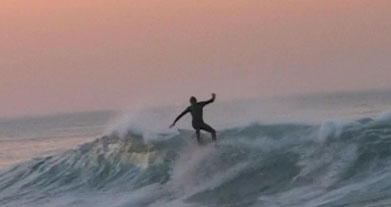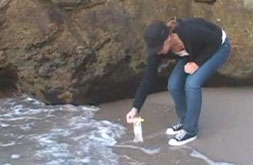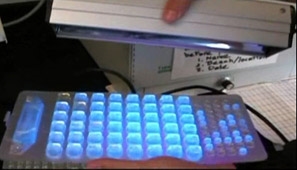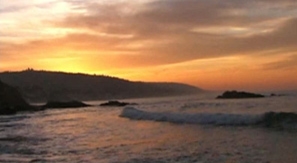 |
| A Blue Water Task Force member enjoys the waves. (myhero.com) |
The Surfrider Foundation is a non-profit organization that is dedicated to cleaning, protecting, and preserving our oceans and beaches. It was founded in 1984 by a group of surfers in Malibu, California, who wanted to preserve their local waters. The Surfrider Foundation has since expanded and now has over 50,000 members and has chapters set up in over 80 locations worldwide.
They aim to protect the beaches and waters by increasing public awareness and educating the general public about the hydrological cycle. The basis of the hydrological cycle is that all water is connected. The rain and snow in the mountains that melts joins the rivers, flows to the oceans, and is evaporated back into the atmosphere to start the process all over. However, this water also flows through communities and industrial areas, washing litter, debris, chemicals, and biological toxins into our oceans.
 |
| A student collects a sample of water to test. (myhero.com) |
The Blue Water Task Force is one of the Surfrider Foundation's programs that is dedicated to testing the toxicity of the water. It is comprised of volunteer activists who test the toxicity levels of their local beaches. Laguna Beach High School is one of many schools that is becoming increasingly involved in the Blue Water Task Force. Armed with Blue Water Task Force testing kits, the students spend several days each month testing their local water. Once they have the results, they post it on flyers and on the Surfrider website.
"Our main goal is to increase community awareness. If the water is contaminated, we want to let everyone in Laguna know," says a Laguna High School student.
 |
| The UV lamp reveals the toxicity of the water. (myhero.com) |
Once the water has been collected and the bags have been incubated, the students read the water trays and record the toxicity levels. According to the tray, it is a bad day to go swimming in the ocean. As another student records the MPN (most probable number) of bacteria in the water, he explains, "It's just urban runoff. It can be anything from the street that goes into the drains, it can be an oil tanker spill, it can be really a variety of things. There's no way to know where it comes from. Most people don't know that 72 hours after it rains, you're not supposed to swim in ocean water because all of this runoff on the streets is getting drained into the ocean."
As indicated by the monthly tests, swimming right after a rainstorm is indeed the most dangerous time to be in the ocean. Although the bacteria levels in the water are generally so low that they are unreadable, after a rainfall the bacteria levels spike due to all the garbage we carelessly throw in the streets, the gutter, or the ocean itself. After five days of heavy rain, the students tested the water on January 11, 2005, for Enterococcus, a bacteria that causes urinary tract infections, meningitis, and several other infections. They found that the water contained 1439 MPN of Enterococcus per 100 ML, a record high that has not been broken in the past 5 years, when only a few days prior to the rain the water contained 52 MPN per 100 ML.
 |
| (myhero.com) |
Everyday things that seem harmless, like soap from washing a car, pet droppings, or even lawn clippings are washed into our drains and dumped in the ocean, where they subsequently raise the number of potentially dangerous bacteria in our water. In order to preserve our oceans and their wildlife, our communities need to become aware of the high levels of pollution and take appropriate action to prevent it. Although the overall contamination level has been decreasing in Southern California due to a decrease in rainfall and an increase in awareness, the waters are still dangerous when it rains and have the potential to make our children ill. If we want our grandchildren to enjoy the same beaches we see today without the risk of becoming sick, we must do everything we can to prevent polluting our waters.
Page created on 8/15/2008 12:00:00 AM
Last edited 1/7/2020 9:06:20 PM
